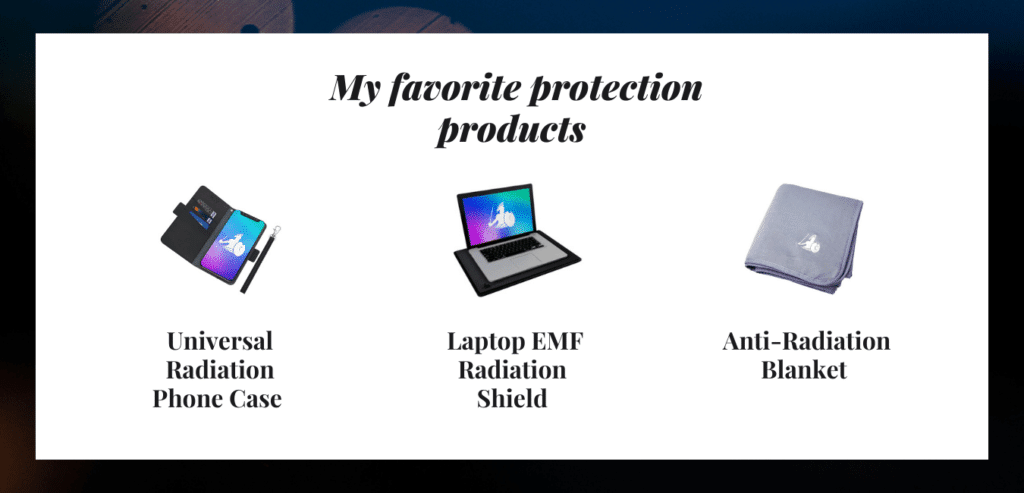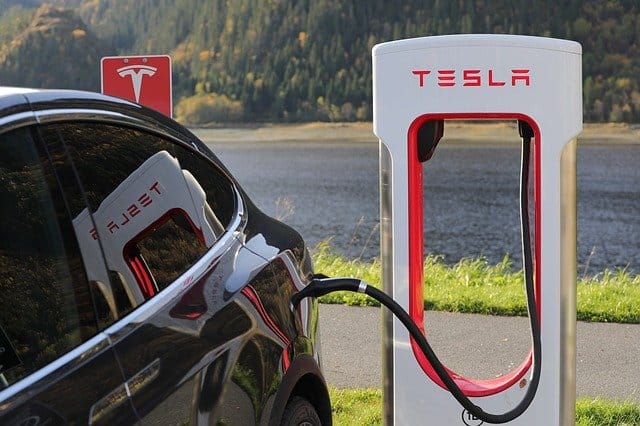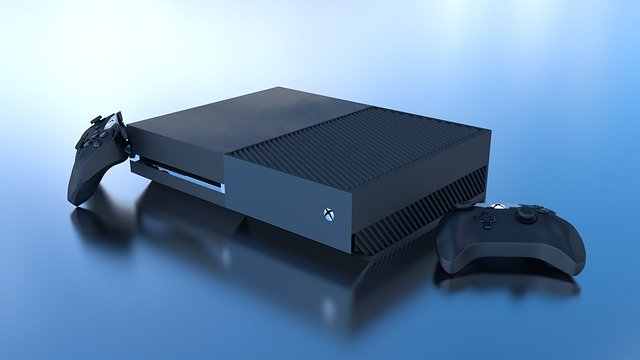
Wondering What Home Devices Will Use 5G? I have spent many hours of research to answer this in the article.
The telecom industry has been at the forefront of our electronic and technological revolution. Our ingenuity and innovation in this field have been nothing short of spectacular, being largely powered by the boom in silicon-based electronics.
From the good old days of the rotary phone we’ve progressed steadily to the smartphones of today that not only enable us to call our loved ones but also connect us to the rest of the world by means of internet.
However, if you look at the development we’ve had in the last three decades in the telecom industry, you’d notice that the last major breakthrough innovation came about a decade ago in the form of 4G LTE. We’ve since then only changed things incrementally.
4G LTE is basically the technology that enables phones to transfer high-speed data over the internet, thus allowing us to use services like GPS, video and audio streaming, voice and video calling, real-time tracking, and so on.
However, with more and more people getting on the web now, the 4G network is finding it hard to service all of these connections at the same promised speed.
It is estimated that by the year 2025 over 4 billion people would be connected to the web with the majority of the traffic coming from mobile devices. To put that number in perspective, that is more than half of the total population of the world.
Never in our history have we had so many people connected to each other through one common network. This is incredible because every one of us will have easy and immediate access to all the knowledge of humankind and everything that we possibly want to know will just be a click away.
That said, it poses some serious challenges of its own as well that we need to take care of first.
The biggest challenge it will pose is the accommodation of this large population on the network. These networks, whether it be 3G or 4G, have a specific bandwidth within which it operates.
Too many people on this network would mean a choke on the bandwidth which will result in an overall decrease of connection speeds for everyone on the network.
This is bad news especially because a lot of systems we are dependent on today need real-time data and even a slight lag in internet speed can inversely affect its workings.
Also, speed was a major factor in us upgrading from 3G to 4G, therefore it doesn’t really make sense to settle for lesser speeds after all this.
Thus, we’ve come up with 5G. Now, 5G isn’t new tech per se. It’s been in development for the last few years and provides a massive boost in terms of speed over our currently existing 4G network.
5G supports up to 100 GB of data transfer per second and has a massive operating bandwidth that can accommodate all of us without slowing down the overall network speed.
This is incredible because it not only allows blazing fast internet but also can host more people on the network, meaning all of us can be connected easily.
However, not everything is as rosy. 5G has its own set of challenges which is why we’ve actively delayed implementing it although the tech was in the pipelines for a long time. Before we can talk about the challenges, we must first understand how 5G works. In the next section, we focus on just that. Read on.

| Universal radiation phone case | Check price here |
| Laptop EMF radiation shield | Check price here |
| Anti- Radiation blanket | Check price here |
Understanding the workings of 5G
The name 5G harks back to the fifth generation of telecom innovation. 5G is a massive jump forward for our telecom industry as it enables very high speeds and allows massive data transfers in parallel.
This enables us to reach speeds we’ve never done before and built technology that is based around such high data consumption models.
5G works by emitting out very high-frequency pulses at rapid intervals. Because they are high frequency, they can pack in more data, thus allowing for higher speeds in transmission.
Also, we can compress and send multiple data within the same frequency waveform which enables parallel data streaming. This is revolutionary since we never could achieve this level of speed and sophistication with the current systems we have in place.
However, 5G has a significant problem.
The core issue with 5G is that since it relies on high energy frequencies, the waveforms do not have enough power to travel long distances. They attenuate fairly quickly, meaning a loss of data.
This is a serious problem and the only real solution to counter it seems to be to put up multiple mobile signal routers and amplifiers all over the place that’d receive the 5G signal, amplify it and rebroadcast it until the waveform reaches its target destination.
This means that the telecom companies will have to use all the space that they can get to install small mobile routers. This is a problem since it significantly amplifies the total radiation level of the locality and puts people at a higher risk of health dangers.
I have a dedicated article on just that for your perusal if you’re interested.
Anyway, the introduction of 5G is bound to have significant ramifications for all of our electronic devices that we’ve come to trust and depend upon so much.
In the next section we take a look at some of the devices that will be impacted by 5G and how adapting to this new tech will change how they work.
A shift to 5G and some products that use them.
Whether you like it or not, there is a shift afoot when it comes to telecom technology. We are rapidly moving away from our present systems and towards 5G.
In this section I will highlight some of the most common devices that will see the transition and how they will adapt to this new technological revolution.
Smartphones
Smartphones are perhaps the most obvious of the candidates that are going to adapt to this technology. Internet speed has always been somethings smartphones have tried to improve upon and a phone that supports the 5G bandwidth is super to be a winner.
Smartphones will enable users to browse at those ultra-high speeds but more importantly will be able to support apps that leverage that speed quotient and deliver superlative performances.
For example, maps. It is estimated that maps will be able to refresh at a rate of 120 Hz every second, meaning you will get absolute real-time traffic updates and routes for your journeys.
It also means that video streaming services like Netflix will be able to play videos at higher resolutions like 8K and 24K. It is estimated that once 5G is adopted to be the universal median, video streaming in 4K will be the new normal. Right now video streams at 720p are considered to be average.
The advent of 5G will also usher in a major shift in how we make calls. Since the bandwidth will be much bigger, it will enable us to implement VoLTE without any lag.
What that means is that you will be able to make phone calls to others over the internet and speak to them in real-time just like you do on the telephone except you wouldn’t need a telephone network to do so.
This will also create new challenges for the telecom sector since now they will be faced with either to upgrade their infrastructure to make VoLTEthe new standard in phone calling or risk losing a lot of money since no one would really prefer spending money on an AT&T SIM while they can make calls for free.
We are also poised to see a lot more of augmented reality (AR) and virtual reality (VR). There are already talks of films being produced in VR that makes you feel as though you are right there in the middle of the action.
This is both interesting and promising since this has the potential to usher in a fundamental change in how we consume entertainment in general.
There are already phones out there by some manufacturers that claim to support 5G.
However, 5G hasn’t been rolled out yet and is still being tested closed doors to understanding the limits of the network and iron out the kinks. But we can say for certain that when it does get rolled out, we are in for one hell of a ride.
There are products out there that will block EMF from cell phones. I have written an article here with some of the products.
Self-driving cars

Tesla has opened the doors to what was for long a thing of science fiction – self-driving cars. They are AI-powered systems that analyze data and predict human action in driving the car.
The car, therefore, becomes autonomous and can theoretically drive long distances (and even entire journey routes) without any human intervention.
This has been in the works for quite some time with milder forms of this system being implemented in the form of cruise control.
But what Tesla did was incorporate a fully functional self-driving system that is able to steer the car efficiently and without incident.
There are countless videos on the internet where a Tesla car is changing lanes on its own or slowing down when there is a car in front of it.
The cars are able to do this because they are retrofitted with an array of cameras and sensors that allow the car to map out the immediate surrounding of the car.
When an alien body (such as another car) enters that area, the car responds accordingly. As impressive as it sounds, there are still a lot of glitches that are present in the systems today.
One famous glitch is the Tesla accident that happened back in 2019. A man was crossing the street and the car estimated that it would be better to just run over the person rather than to slow down. This ended up being a tragic accident and Tesla’s share prices fell significantly the next day.
This is exactly where 5G comes into play. 5G will enable these cars to make more accurate models of how to react and thus is expected to reduce such tragic accidents.
It is also predicted that with the advent of 5G, self-driving options will become more and more common in cars, and the autopilot will soon come to be a standard feature.
Machine learning
We use machine learning extensively to enable natural language processing within machines and 5G can provide a much needed boost to that.
Because of its higher bandwidth, the devices will be able to process more data efficiently.
This will manifest in smart assistants becoming a mainstay as our technological interface and more and more devices being connected to a central ‘smart’ system.
This means things like smart homes will be more and more common and just talking to your fridge and other appliances instead of getting up and using them will become the new normal.
That aside, it has some serious scientific advantages as well. A higher bandwidth will help us with better mathematical modelling and help us project astronomical activities with more precision.
We will also be able to run more and more complex data models that will help us in fields from medicine to stock markets.
5G truly will be a revolutionary technological leap for mankind, one which will have lasting ramifications on the quality of our life.
But it will come at its own price. 5G has been shown to emit massive amounts of radiation, exposing ourselves to which can put our health at grave danger. We have a detailed article on that if you are interested in reading more about it.
Here are some of my favored emf protection products.
My personal favorite EMF detection and protection products.
- DefenderShield EMF Radiation Protection Blanket – Ultimate protection from wireless radiation. The only EMF radiation protection blanket with multiple layers of shielding to block up to 100% of wireless (RF) radiation from cell phones, tablets, laptops, WiFi routers, and other electronic devices, and ambient emissions in the environment. Available on Amazon here.
- DefenderPad Laptop EMF Radiation Protection & Heat Shield. The DefenderPad is the ONLY laptop pad that uses multiple layers of shielding to block up to 100% of laptop EMF radiation (RF & ELF) while also greatly reducing heat! Get the latest price on Amazon here.
- DefenderShield Universal EMF Radiation Protection Pouch for Smartphones – EMF shielding to block up to 100% of wireless (RF) radiation. Most pouches only block a percentage of radiation emitted from your cell phone. Shielding is within the backside of the pouch to block signals and EMF emissions going towards the body, yet does not interfere with phone connectivity. Available on Amazon here.
- Copper Fabric Blocking RFID/RF-Reduce EMF/EMI Protection Conductive Fabric for Smart Meters – Very easy to cut and sew. Usage for Bags, Curtains, Tents, etc. Effective Shielding for CellTowers, Microwave Signals, Phones, and Smart Meters. Find it on Amazon here.
- TriField EMF Meter Model TF2. is an AC gaussmeter, AC electric field meter, and radio power density meter in a single unit, that combines all the features needed for fast, accurate measurements of electromagnetic fields (EMF). Best price on Amazon here.
Related questions
- Is 5G better than 4G?
We have to first establish the parameters within which this betterment is measured. When it comes to speed then yes, 5G is a massive upgrade on 4G.
The speeds that 5G can achieve are literally a hundred times more than that of 4G. However, 5G emits significantly more radiation than 4G and thus puts users at a higher health risk. Therefore it is really difficult to judge which is better.


